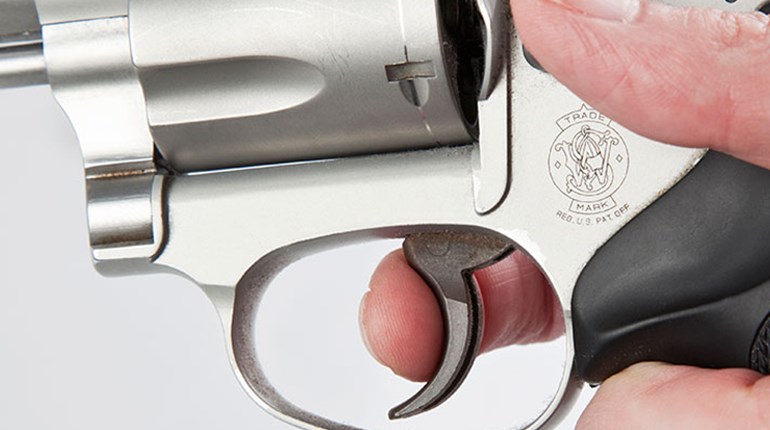
 There are several fundamentals of shooting: aiming, hold control, trigger control and breath control. As with many other facets of life, there's one more hurdle to mastery and that's follow-through. What is it? Well, follow-through is the final step in the integrated act of firing the shot. Follow-through is the glue that holds the other fundamentals together and makes firing the perfect shot possible. The big questions concerning follow-through are: How do you follow through, and how can you improve?
There are several fundamentals of shooting: aiming, hold control, trigger control and breath control. As with many other facets of life, there's one more hurdle to mastery and that's follow-through. What is it? Well, follow-through is the final step in the integrated act of firing the shot. Follow-through is the glue that holds the other fundamentals together and makes firing the perfect shot possible. The big questions concerning follow-through are: How do you follow through, and how can you improve?
First, how does the shooter follow through? The simplest description of follow-through is that it's when you maintain aim, breath control, hold control and trigger control until after the shot has been fired and the gun has settled back into position. When does follow-through start? Follow-through starts when the shooter has aligned the sights and begun to aim the shot.
NRA Junior Rifle Shooting, the handbook for training young people in rifle shooting, says to extend follow-through for a full two seconds after the shot is fired. Those seconds include time for the firearm to recoil and for the shooter to recall what the sight picture looked like as the shot was fired, making it possible to call the shot. The time required for recovery depends on the shooting position and the caliber of the firearm being used. Good recovery is the last stage of follow-through and pays big dividends when it comes to evaluating both a shot and a shooter's position. Reflexive recovery at the end of follow-through also prepares the shooter for sustained fire.
It's hard to tell on your own if you're following through properly. Have a coach (or other person who's working with you) observe you in the process of follow-through. They should position themselves just outside the arc of your peripheral vision-so their presence won't distract you-and watch for small movement or adjustment to your position following the shot. These adjustments may occur as you fire the shot, or during recovery, or after follow-through is complete. They usually occur because you did not build a true natural point of aim. What your coach will see is you forcing the gun back into position instead of letting a correct natural point of aim do the job.
Another point the coach should watch for occurs when the shooter relaxes after the shot instead of following through. Then the whole rifle drops out of position because the shooter was using muscles, not a good position, to hold the rifle. Other things they should watch for are head position, eye relief, eyes closing and grip on the firearm.
Once following through becomes second nature, the next step is to build on the technique as a tool for shooting sustained fire. What is sustained fire? It is simply firing one shot at a time, one after another. Examples of sustained fire include firing a string of 10 shots in 60 seconds with a rifle, or firing a string of five shots in 20 seconds (called “time fire”) with a pistol.
One way to make the transition from slow fire (loading and firing one shot at a time), to a shot every four to six seconds, is to simply compress the time used to complete the integrated act of firing the shot. By learning the fundamentals including follow-through, you have already built a firm foundation on which you can build sustained-fire skills. You'll gradually speed up the integrated act of firing, while correctly performing each fundamental.
There are two techniques that can help you develop a smooth transition between shots. Both will refine your “shot process,” which is the system every shooter develops for firing the shot. Shot process includes mental preparation, shooting position and the integrated act of firing the shot. One technique is to breathe after each shot. Taking a breath keeps your vision clear by oxygenating the blood. Breathing can also help you time your shot string by developing a firing cadence.
The second technique is to reset the trigger. Learning to reset the trigger will take some training, but it is worth the effort. You'll keep the trigger finger in contact with the trigger and release it only far enough to reset the sear. By maintaining contact with the trigger, you reduce firing time by not having to take up the slack in the trigger stage.
The techniques of breathing and resetting the trigger will save you time, making more time available for working on your aiming and trigger control.
Follow-through welds the shooting fundamentals-aiming (sight alignment and sight picture), breath control, hold control and trigger control-into one continuous action. This technique of using follow-through to continue applying the fundamentals reduces the chance that you will give up on the shot just as it is fired.







































